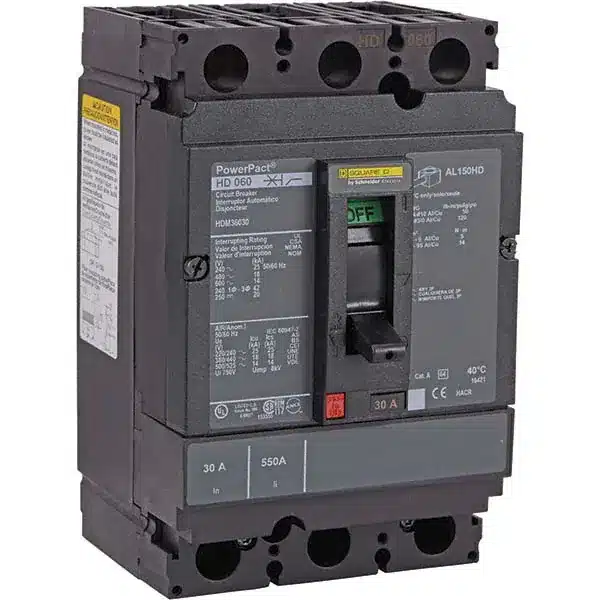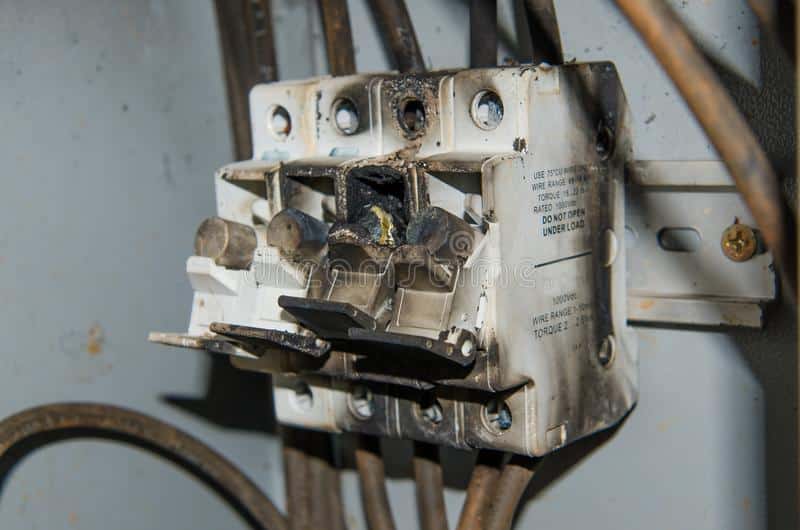According to The National Electric Code (NEC), a 15 Amp circuit should have eight receptacles, whereas a 20 Amp circuit should have ten. What about a 30 Amp circuit?
Depending on the outlet type, the circuit’s electrical capacity, and the device’s electrical load, the maximum number of outlets you can wire on a 30 Amp circuit may reach up to 16!
In this article, we’ll go over everything you need to know about wiring receptacles on a 30 Amp circuit.
30 Amp Circuits: The Basics

A 30 Amp circuit is an electrical circuit that handles a maximum load of 3600 Watts of electricity suitable for heavy-duty appliances.
Examples of appliances you’re allowed to connect to a 30 Amp circuit include air conditioners, microwaves, water heaters, dryers, freezers, refrigerators, ovens, washing machines, and other appliances with powerful motors and heaters consuming a lot of energy.
Outlet Types Compatible With a 30 Amp Circuit
When it comes to wiring outlets on a circuit with a 30 Amp capacity, there are different types you can use. The most common ones are 120 Volt outlets and 240 Volt outlets. Let’s learn more about them.
120 Volt Outlets
120 Volt outlets are standard in most homes and offices. They have two hot wires, a neutral wire, and a ground wire. However, because they provide less power than 240-volt outlets, they’re unsuitable for high-powered appliances like air conditioners and water heaters.
120-volt outlets are used for smaller kitchen appliances and electronics, such as:
- TVs
- Gaming consoles
- Toasters
- Coffee makers
- Blenders
- Microwaves
- Modems
- Routers
- Space heaters
- Lamps
240 Volt Outlets
These outlets are larger than the standard 120 Volt ones and have a different configuration. They include two hot wires and a ground wire, but no neutral wire. Because they require more power than standard outlets, 240 Volt outlets are unsuitable for smaller appliances and electronics.
240 Volt outlets are typically used for high-powered appliances such as:
- Air conditioner
- Microwave
- Washing machine
- Dryer
- Oven
- Fridge
- Freezer
Determining the Total Electrical Load on a 30 Amp Circuit
According to the NEC, a circuit shouldn’t supply its outlets with more than 80% of its total power capacity, meaning that outlets could receive up to 24 Amps of energy from a 30 Amp circuit (30 Amps multiplied by 0.8 (80%) is 24).
NEC has another recommendation, and that is to use no more than 1.5 Amps per outlet. So following the 80% NEC guideline, you can wire a maximum of 16 outlets on a 30 Amp circuit and use no more than 1.5 Amps per 120 Volt outlet.
These rules are merely precautions, and the NEC hasn’t specified how many receptacles you can wire to a 30 Amp outlet. The reason for this is that the quantity of outlets is meaningless as long as the circuit’s highest allowable electrical load, in our example 24 Amps, is not exceeded.
So, what if we have to power heavy-duty appliances that will draw more than 1.5 Amps of electricity from an outlet? For example, what if we need 4 Amps per 240 Volt outlet?
If you need 4 Amps per 240 Volt outlet, you can safely wire up to six 240-volt outlets on the circuit.
It’s important to note that the total electrical load may change depending on the appliances connected to the circuit. For example, if you power medium-wattage appliances and devices that require no more than 1.5 Amps of electricity, you can install up to 16 outlets.
But if you need outlets for heavy-duty appliances, that number will decrease. Decide what devices you’ll likely power on the circuit before you start the installation, and then determine how many receptacles that circuit needs.
Can Circuits & Lights Be Wired on The Same 30 Amp Circuit?
It’s not recommended to wire circuits and lights on the same 30 Amp circuit. A 30 Amp circuit is typically used for heavy-duty appliances such as air conditioners, electric water heaters, or ovens, which draw a lot of power.
The NEC mandates that you must connect electrical devices to specific circuits. For instance, it specifies that lighting fixtures must be wired on a 15 Amp circuit, and receptacles must be wired on a 20 Amp circuit.
This means that wiring circuits and lights on the same circuit violates the NEC codes and regulations. If you do so, the circuit may become overloaded, leading to overheating, equipment damage, or even electrical fires.
Wiring outlets and lights on separate circuits distributes the load evenly and prevents circuit overload. Following the NEC codes and regulations while wiring electrical systems is essential to ensure safe and reliable electrical operation.
Risks of Overloading 30 Amp Circuits

A 30 Amp circuit can be overloaded with too many outlets, which is highly hazardous and creates a fire threat.
The circuit is designed to handle a specific amount of electrical current, typically around 3,600 watts of power. If you add more outlets than its maximum load, the electrical pressure will cause it to trip or, even worse, ignite a fire.
In addition to the risk of fire, overloading a circuit damages your electrical appliances and devices, potentially leading to costly repairs or replacements.
Always follow the manufacturer’s instructions and local building codes when installing electrical outlets and breakers. If you are unsure how to properly wire your electrical system or need to add additional outlets, it’s best to consult with a licensed electrician to ensure the job is done safely and correctly.
How to Avoid Overloading a 30 Amp Circuit?
To avoid overloading a 30 Amp circuit, take the following steps:
- Know the maximum load: Ensure you know the maximum load safely supported by the 30 Amp circuit. The number will depend on several factors, like the outlet type, the number of wired outlets, and the type of plugged-in devices. Consult an electrician to determine the safe load capacity.
- Use the right devices: Make sure the devices you connect to the circuit are rated for 30 Amps. If you’re not sure, check the device’s label or manual.
- Avoid using too many devices: Limit the number of devices you connect to the circuit to avoid overloading it. If you need to use multiple devices, spread them across different circuits.
- Monitor the circuit: Keep an eye on its load to ensure you’re not exceeding its capacity. You can use a clamp meter or another monitoring device to measure the current flowing through the circuit.
- Upgrade the circuit: If you need to use devices that may exceed the circuit’s capacity, consider upgrading it to a higher capacity. Such a procedure means rewiring and installing a new circuit breaker, so consult an electrician to ensure the job is done up to standards.
Conclusion
In conclusion, the number of outlets you can wire on a 30 Amp circuit will depend on the total electrical load of the appliances connected to the circuit and the type of outlet used.
As a general rule, you should not exceed 80% of the circuit’s maximum load capacity, which for a 30-amp circuit is 24 Amps. By following these guidelines, you can safely wire up to 16 outlets (depending on the device’s type) on a 30 Amp circuit and avoid overloading the circuit.
It’s generally not recommended to wire circuits and lights on the same 30 Amp circuit. The best practice is to wire them on separate circuits to ensure your electrical system’s safe and reliable operation. If you’re unsure about the best way to wire your electrical system, consulting with a licensed electrician is always a good idea.